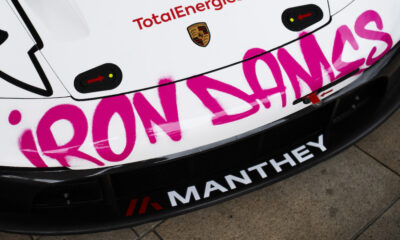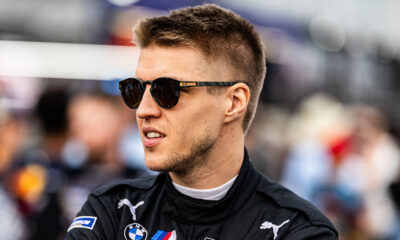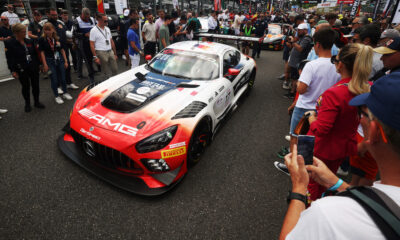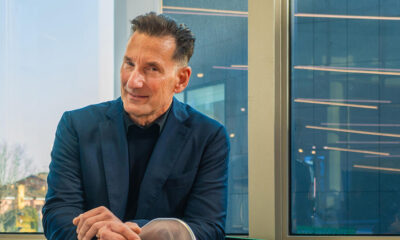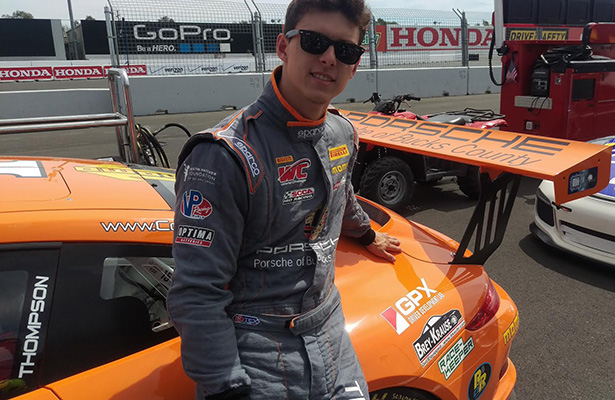
Colin Thompson’s dream season in Pirelli World Challenge continued last weekend at Sonoma Raceway, where the 21-year-old notched his 12th GT Cup presented by MOMO class win in 17 races following a dominant run at a track he hadn’t previously been to.
Thompson, who has already locked up the inaugural GT Cup title, credits his success in Sonoma to a virtual test earlier in that month at the new GPX Driver Development Lab.
The Miami-based simulator facility, run by three-time GRAND-AM champion Jeff Segal, has already been utilized by nearly 30 drivers, including a number of current IMSA, PWC and Ferrari Challenge pilots since its launch in late May.
“Man, I’ll tell you what, that thing is accurate,” Thompson told Sportscar365. “I’ve been on quite a few simulators, everything from my simulator at home, which was essentially just a wheel on a table, all the way up to $500,000 moving simulators.
“There’s nothing that parallels that system because between the full analytics they’re pulling out of it, you’re in an actual sports car and cockpit, with real pedals that are connected with real fluid to real brakes. You get the right feel all over the place.”
Thompson took the wheel of a virtual Porsche 991 Cup car, one of two-dozen vehicle physics models offered at GPX, for a half-day session that saw him come to grips with the 2.52-mile Northern California circuit.
“The first few laps, I looped it, I crashed it, I did everything you could have imagined,” he said. “That kind of stuff would be a lot more costly in real life.
“There, we just hit the reset button and went again. I was able to push the limits, find the limits of the track and really lean on the car not having to worry about such large consequences.
“You go into [the simulator] for a morning and you come out with a totally different perspective on the track.”
By the time race weekend rolled around, Thompson found himself immediately up to speed, putting his Kelly Moss Motorsports Porsche 911 GT3 Cup car on the top of the time charts in every single session.
“We went out right out of the box and were expecting [Alec] Uddell, who has a ton of laps around there, or Sloan [Urry] to blow us away, at least in the first session,” Thompson said. “We were right up at the top and had over a one-second gap in the first session, which is unheard of.
“When I went out there, I did exactly the same thing I did on the simulator and I think my times were within a couple tenths of each other, from the simulator to real life. That’s unbelievable.”
Segal, who has been one of the most active driver coaches in sports car racing, said he launched GPX earlier this year to help fill a void for U.S.-based drivers that have expressed interest in gaining additional track time, without the usual constraints, costs, and logistical difficulties involved with actual on-track testing.
“Having seen the way that motorsports simulation has recently become a really integral tool for young-driver training, particularly in the junior open-wheel formulas in Europe, it seemed like there was an opportunity to adapt this same concept to the U.S. market, and even expand it to cater to drivers young and old, amateur or professional and everything in between,” Segal told Sportscar365.
Having forged a technical partnership with Darren Turner’s UK-based Base Performance Simulators, which sees the two companies share development of hardware and software tools, Segal has taken a hands-on approach with clients that goes beyond just typical seat time.
Simulator sessions at GPX offer real-time telemetry, data acquisition tools, video overlays and replays for drivers, as well as the ability for passenger seat coaching in a safe virtual environment.
“The core principal is that simply doing more laps is a really inefficient way to improve driver performance,” Segal said. “We prefer to utilize every tool available to allow the driver to understand what can be improved, how it can be done, and then go and realize those gains immediately.
“We encourage drivers to bring their existing coaches, engineers, and so on in order to really replicate the at-track environment fully within the simulator when possible, as this further enhances the productivity of the experience.”
The results prove for themselves. Segal used the simulator to learn the legendary Circuit de la Sarthe prior to helping take Scuderia Corsa to a podium finish in his 24 Hours of Le Mans debut in June. Others such as fellow PWC drivers Henrique and Eduardo Cisneros and Alessandro Balzan have all gotten seat time as well, as well as racing legend Emerson Fittipaldi.
For Thompson, who wraps up his championship-winning season later this month at Mazda Raceway Laguna Seca, he’s hopeful of one day getting to Le Mans, and knows he’ll be a repeat customer to GPX’s lab to make the most of any future opportunity.
“It never hurts to refresh yourself on tracks you’ve been to or haven’t been to in a while,” he said. “Even more so, for European tracks, If I have a race overseas that’s bound to happen, going on the simulator and getting a morning of track time is absolutely priceless. It’s something I’ll utilize for sure.
“It’s really an amazing experience. When you go to the track, you might spend tens of thousands of dollars a day to get track time, depending on what you’re driving, and sometimes due to weather or other circumstances, you might not get much value.
“With this, [GPX] is offering it at a price point you can burn laps all week long and not spend what you would in real racing and with a real tangible gain for your next on-track session.
“That’s the trick that people haven’t been able to figure out in that industry that I feel Jeff’s got.”


















